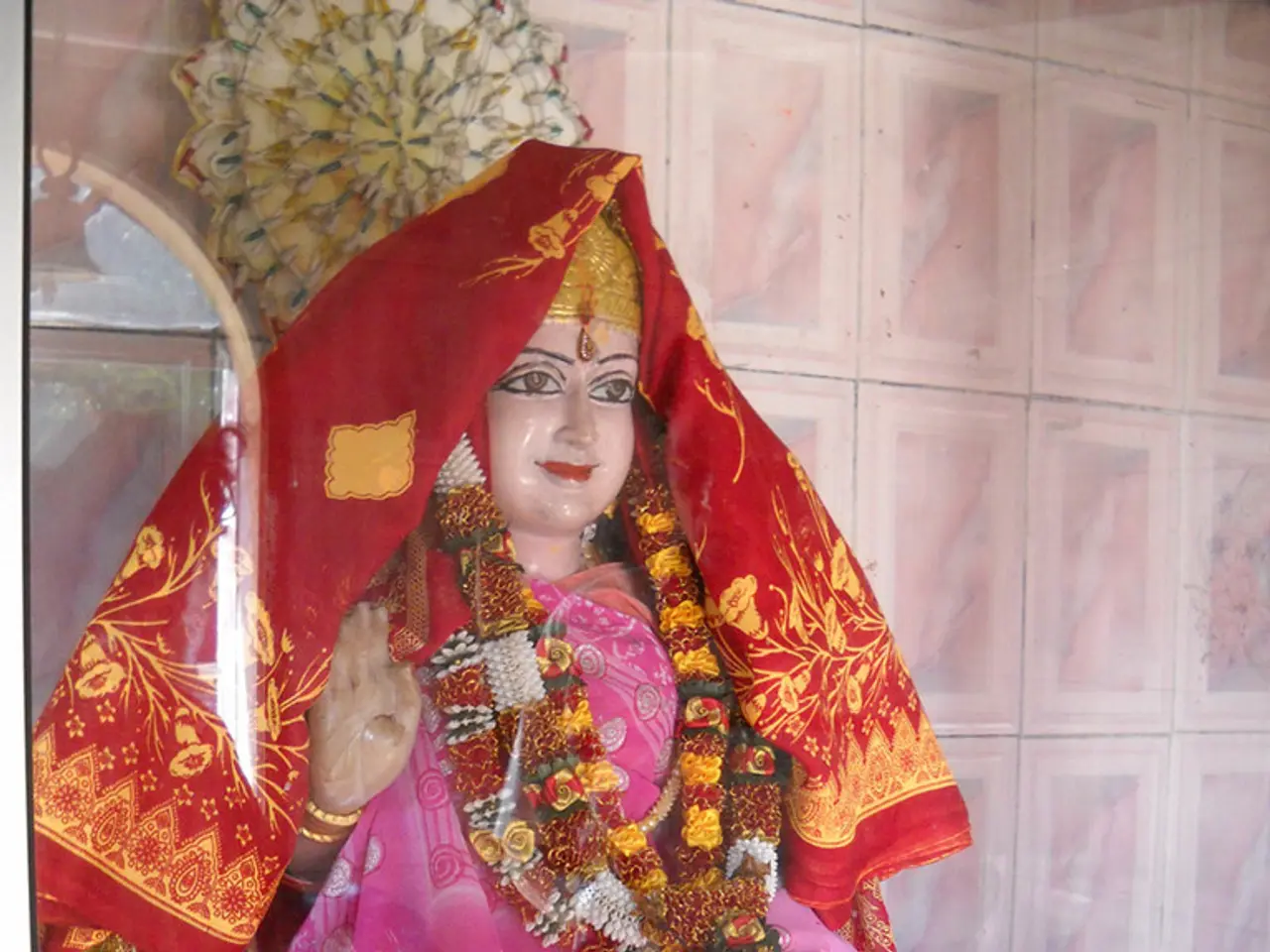Greek Deity Representing Delight and Happiness: Hedone, Goddess of Pleasure and Bliss
In the realm of ancient mythology, two figures embody the concept of pleasure and enjoyment: Hedone in Greek mythology and her Roman counterpart, Voluptas.
For the ordinary Greeks, Hedone symbolized the simple joys of daily life, encompassing wine, athletic competition, poetry, and intimate companionship. However, she was more than just a representation of earthly delights; she was the personification of pleasure and enjoyment.
Hedone was born as the daughter of Eros, the god of love, and Psyche, a mortal turned goddess who represented the human soul. Being the grandchild of Aphrodite, Hedone belonged to the third generation of deities in the Greek pantheon.
In Roman mythology, Hedone was adopted as Voluptas, with similar connotations. Lucian, the satirist, depicts Voluptas as part of Eros's entourage, highlighting her subordination to desire in Roman interpretations.
Pompeian wall paintings occasionally depict Voluptas in garden settings, surrounded by symbols of sensory delights. Her iconography often includes honey, roses, and butterflies, symbolizing pleasure's ephemeral yet essential nature.
The philosophical schools that dealt with Hedone (pleasure) include Epicureanism, founded by Epicurus in Athens. Epicurus developed a more nuanced view, arguing that the highest pleasure was ataraxia (tranquility of mind) achieved through moderate living, philosophical contemplation, and friendship. This contrasts with the Cyrenaics, founded by Aristippus of Cyrene, who advocated immediate bodily pleasures as life's highest good.
Philosophers distinguish between different types of hedone: kinetic pleasures (active, stimulating experiences) versus katastematic pleasures (stable states of satisfaction). This nuanced understanding of pleasure is evident in Plato's dialogue Philebus, where characters debate the role of pleasure in a good life.
In Roman ethical debates, Voluptas' central place is evident in Cicero's works, such as De Finibus and De Natura Deorum. Roman writer Varro identified Voluptas as one of the divine guardians of human life alongside Lubentina and Volupia.
Interestingly, Hedone is considered a daimona, a spirit-like deity, rather than a major divinity among the Greek gods and goddesses. Voluptas, too, is discussed in philosophical arguments about divine nature, as seen in Cicero's De Natura Deorum.
A famous second-century CE Roman sarcophagus in the Capitoline Museum depicts Voluptas in the marriage of Cupid and Psyche, further illustrating her role in the narrative of love and pleasure.
Voluptas is sometimes shown in the company of the Three Graces or Charities, representing beauty, charm, and creativity, underscoring the interconnectedness of these elements with pleasure. This connection between pleasure and beauty is also evident in the depiction of Voluptas in garden settings, where she is surrounded by symbols of sensory delights.
In conclusion, Hedone and Voluptas, the personifications of pleasure and enjoyment in Greek and Roman mythology, offer a fascinating exploration into the ancient understanding of pleasure and its role in human life. From the simple joys of daily life to the philosophical debates about the nature of pleasure, these figures continue to captivate our imagination and inspire reflection on the nature of pleasure and its role in our lives.








